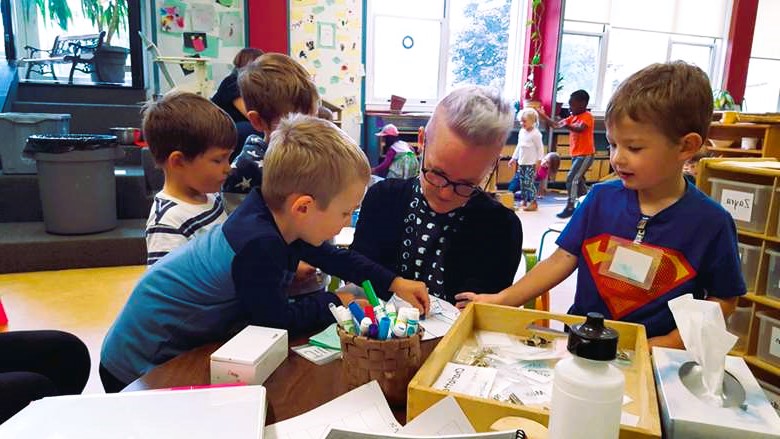Canada, known for its commitment to diversity and inclusivity, is at the forefront of transformative initiatives in the field of education. In recent years, there has been a notable shift towards inclusive education, aiming to create learning environments that embrace diversity, accommodate all students, and foster a sense of belonging. This article explores the inclusive education initiatives that are reshaping Canadian schools, the impact on students and communities, and the ongoing efforts to build a more inclusive educational landscape.
1. Embracing Diversity in Student Populations
Canada’s schools are becoming increasingly diverse, reflecting the multicultural nature of the country. Inclusive education initiatives recognize and celebrate this diversity, emphasizing the importance of providing an equitable and supportive learning environment for students from various cultural backgrounds, abilities, and identities.
2. Universal Design for Learning (UDL)
One key pillar of inclusive education in Canada is the adoption of Universal Design for Learning (UDL) principles. UDL is an educational framework that seeks to accommodate diverse learning styles and needs. By incorporating multiple means of representation, engagement, and expression, educators aim to make learning accessible to all students, including those with different abilities, learning preferences, and cultural backgrounds.
3. Special Education Support Programs

Canadian schools are implementing and expanding special education support programs to ensure that students with diverse needs receive the assistance required for their academic and social development. This includes personalized learning plans, access to assistive technologies, and collaboration between special education teachers and mainstream educators to provide integrated support.
4. Inclusive Curriculum Development
Inclusive education goes beyond just acknowledging diversity; it involves reevaluating and reshaping the curriculum to be more inclusive. Canadian educators are working to incorporate diverse perspectives, histories, and cultural contexts into the curriculum. This approach not only validates the experiences of all students but also provides a more holistic and accurate representation of Canada’s rich cultural tapestry.
5. Accessibility Measures in Schools
Physical accessibility is a critical aspect of inclusive education. Schools across Canada are making structural changes and implementing accessibility measures to ensure that all students, regardless of physical abilities, can navigate the school environment independently. This includes ramps, elevators, accessible washrooms, and other accommodations to create barrier-free spaces. Canadian destinations and tourism trends in an article about the Future of Travel.
6. Professional Development for Educators
To effectively implement inclusive education initiatives, ongoing professional development for educators is crucial. Canadian teachers are participating in workshops, training programs, and courses focused on inclusive teaching practices. These initiatives aim to enhance educators’ understanding of diverse learning needs and equip them with the tools to create inclusive classrooms.
7. Mental Health and Well-being Support
Inclusive education extends beyond academic considerations to encompass the mental health and well-being of students. Canadian schools are implementing comprehensive mental health support systems, including counseling services, peer support programs, and initiatives that promote a positive and inclusive school culture. Addressing mental health concerns ensures that students feel emotionally supported and ready to engage in their educational journey.
8. Parent and Community Engagement
Inclusivity in education is a collaborative effort that involves parents, caregivers, and the broader community. Canadian schools are actively engaging parents and communities in the educational process. This includes regular communication, involvement in decision-making processes, and fostering partnerships to create a shared commitment to inclusive education.
Impact on Students and Communities
The impact of inclusive education initiatives in Canada is profound and extends beyond the classroom:
- Improved Academic Outcomes: Research indicates that inclusive education positively impacts academic outcomes for all students. By catering to diverse learning styles and needs, schools create an environment where every student has the opportunity to succeed.
- Enhanced Social Skills: Inclusive classrooms provide opportunities for students to interact with peers from various backgrounds and abilities. This fosters empathy, understanding, and the development of essential social skills, contributing to a more inclusive society.
- Promotion of Equity: Inclusive education promotes equity by addressing systemic barriers and providing tailored support to those who need it. This helps bridge gaps in educational achievement and creates a more level playing field for all students.
- Preparation for a Diverse Society: Inclusive education prepares students for life in a diverse and interconnected world. By experiencing diversity in the classroom, students are better equipped to navigate and contribute to a multicultural society.
Ongoing Challenges and Future Directions

While Canada has made significant strides in inclusive education, challenges persist:
- Resource Allocation: Adequate resources, including funding, personnel, and support services, are essential for the successful implementation of inclusive education initiatives. Ensuring equitable resource allocation remains a priority.
- Attitudinal Shifts: Overcoming deep-seated biases and fostering attitudinal shifts among educators, parents, and communities is an ongoing challenge. Creating a culture of inclusivity requires continuous education and awareness-building.
- Evaluation and Monitoring: Regular evaluation and monitoring of inclusive education programs are necessary to assess their effectiveness and identify areas for improvement. Continuous feedback and data-driven insights are essential for refining and enhancing these initiatives.
Conclusion
Inclusive education initiatives in Canada are reshaping the educational landscape, fostering environments where diversity is not only acknowledged but embraced and celebrated. The commitment to inclusivity in Canadian schools reflects a broader societal understanding of the value of diversity and the importance of providing equitable opportunities for all students. As these initiatives continue to evolve, Canada stands as a model for inclusive education that prioritizes the well-being and success of every learner.
For more information on inclusive education standards and initiatives in Canada, you can visit Wikipedia for an overview. Additionally, the official website of the Government of Canada provides information on educational policies and initiatives. These resources offer valuable insights into the regulatory frameworks and ongoing efforts to enhance inclusive education practices in the country.
